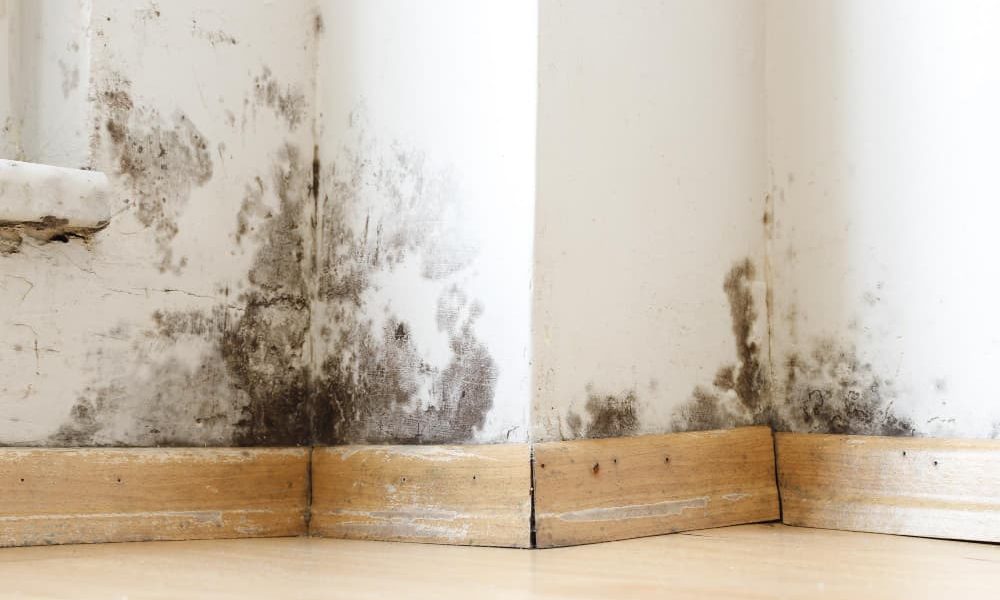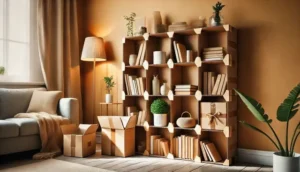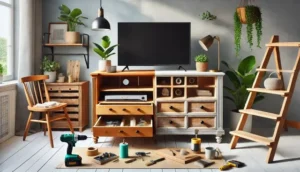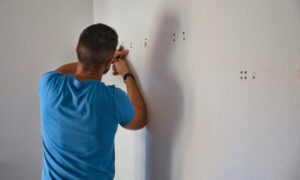Pallet coffee tables have taken the world of DIY furniture by storm. With their rustic charm, affordability, and versatility, they make an ideal project for both beginners and seasoned DIY enthusiasts alike. But what exactly is a pallet coffee table, and why are so many people turning to reclaimed wood for their furniture projects?
At its core, a pallet coffee table is a piece of furniture crafted from wooden pallets, often reclaimed from shipping yards or warehouses. These humble materials are repurposed to create stunning, functional pieces that add character to any living space. Whether you’re looking to give your home a rustic makeover or simply want a budget-friendly alternative to store-bought furniture, building your own pallet coffee table is an excellent option.
One of the primary reasons people choose to build pallet coffee tables is the creative freedom they offer. Unlike pre-made furniture, DIY pallet tables can be customized to fit your personal style, whether you prefer a minimalist, modern look or a more rugged, industrial feel. Plus, there’s something undeniably satisfying about crafting a beautiful piece of furniture with your own hands, using materials that might otherwise end up in a landfill.
However, the appeal of pallet coffee tables goes beyond aesthetics and creativity. Reclaimed wood, which is often sourced from used pallets, has a unique charm that brand-new lumber simply can’t replicate. Each piece of wood has its own history, complete with knots, grain patterns, and weathered textures that tell a story. These imperfections add character and make every DIY pallet table a one-of-a-kind creation.
Building a pallet coffee table is also a great way to be environmentally conscious. By using reclaimed wood, you’re giving new life to materials that would otherwise be discarded. In a world where sustainability is becoming increasingly important, opting for reclaimed wood is a small but meaningful step toward reducing waste and minimizing your environmental footprint.
In this blog post, we’ll dive into the process of building a DIY pallet coffee table from reclaimed wood, exploring why reclaimed materials are such a popular choice for DIY projects and how you can source the best pallets for your own creation. Whether you’re a first-time builder or a seasoned DIYer, this guide will walk you through everything you need to know to create a stunning pallet coffee table that reflects your style and values.
Why Use Reclaimed Wood for DIY Projects?
If you’re new to the world of DIY furniture, you might be wondering why so many people are drawn to using reclaimed wood, especially for something as prominent as a coffee table. After all, new lumber is readily available at most hardware stores, so why go through the extra effort of sourcing and preparing reclaimed wood?
The answer lies in the many benefits that reclaimed wood offers, both from an aesthetic and environmental standpoint.
- Unique Character and Charm
One of the most compelling reasons to use reclaimed wood for your pallet coffee table is its distinctive character. Unlike freshly cut lumber, reclaimed wood has already lived a life, often having been exposed to the elements or used in previous construction projects. This weathering process gives reclaimed wood a rich, textured appearance that can’t be easily replicated with new materials.
The natural imperfections in reclaimed wood—such as knots, nail holes, and variations in color—add a sense of authenticity and warmth to any piece of furniture. When you build a pallet coffee table from reclaimed wood, you’re not just crafting a functional piece of furniture; you’re creating something with history and personality.
For those who love the idea of a coffee table that stands out, reclaimed wood is a perfect choice. No two pieces of reclaimed wood are exactly alike, which means your DIY pallet coffee table will be truly unique, even if you follow the same building plans as someone else.
- Sustainability and Environmental Impact
Another significant advantage of using reclaimed wood is its positive impact on the environment. In recent years, there has been a growing awareness of the importance of sustainability, particularly in the world of furniture and home decor. Traditional furniture manufacturing often involves the cutting down of new trees, contributing to deforestation and other environmental issues.
By using reclaimed wood, you’re making a more eco-friendly choice. Instead of relying on new lumber, you’re repurposing wood that has already been harvested, processed, and used for a previous purpose. This reduces the demand for new wood and helps to minimize waste. It’s a small but impactful way to contribute to a more sustainable future.
Additionally, by opting for DIY furniture made from reclaimed materials, you’re reducing the carbon footprint associated with mass-produced furniture. Many store-bought coffee tables are manufactured in factories, often in other countries, and then shipped across long distances. This transportation process generates significant carbon emissions. In contrast, building your own pallet coffee table from locally sourced reclaimed wood reduces the environmental impact associated with production and shipping.
- Cost-Effective and Budget-Friendly
One of the most practical reasons people choose reclaimed wood for their DIY projects is its affordability. Pallets and other reclaimed materials can often be found for free or at a fraction of the cost of new lumber. Many warehouses, shipping companies, and construction sites are happy to give away their used pallets rather than pay to dispose of them.
If you’re working on a tight budget, building a pallet coffee table from reclaimed wood is a cost-effective way to create beautiful, functional furniture without breaking the bank. And because you’re saving money on materials, you can invest in quality tools or finishes that will help your coffee table last for years to come.
- Durability and Strength
Despite its weathered appearance, reclaimed wood is often stronger and more durable than new lumber. Many pallets are made from hardwoods like oak or maple, which are prized for their strength and resistance to wear and tear. Because reclaimed wood has already been exposed to the elements, it has developed a natural toughness that makes it ideal for furniture construction.
In addition to being physically strong, reclaimed wood also tends to be more stable. New wood can warp, shrink, or expand as it acclimates to its environment, but reclaimed wood has already gone through this process, making it less prone to movement over time. This stability is particularly important when building furniture like a coffee table, which needs to be sturdy and reliable.
Finding the Right Pallets for a Coffee Table
Building a pallet coffee table begins with sourcing the right materials. Not all pallets are created equal, and choosing the wrong type of pallet can affect the quality, safety, and appearance of your finished table. In this section, we’ll cover everything you need to know about finding and selecting the best pallets for your DIY project, from where to look to what to avoid.
- Where to Source Reclaimed Wood Pallets for DIY Projects
The first step in building your pallet coffee table is finding the pallets themselves. Luckily, pallets are often readily available, as they are commonly used in industries like shipping, warehousing, and construction. Many companies discard their used pallets after they’ve served their purpose, making them an excellent source of free or low-cost wood for DIY projects.
Here are a few places where you can start your search for reclaimed wood pallets:
- Local Businesses and Warehouses: Many small businesses and warehouses receive shipments on pallets, and they may have no use for them once the goods are unpacked. Check with local hardware stores, grocery stores, and other businesses to see if they’re willing to part with their old pallets. Some businesses may even be happy to give them away for free to avoid disposal costs.
- Construction Sites: Construction sites often use pallets to transport building materials. While you should always ask for permission before taking anything from a site, many contractors are willing to give away pallets they no longer need.
- Online Marketplaces: Websites like Craigslist, Facebook Marketplace, and Freecycle are great resources for finding used pallets in your area. Many people list pallets they no longer need, and you can often find them for free or for a small fee.
- Recycling Centers: Some recycling centers collect wooden pallets for reuse. Check with local recycling facilities to see if they have any available.
While pallets can often be found for free, be prepared to invest some time in your search. The quality of the pallets you find will vary, so it’s essential to inspect them carefully before taking them home.
- What to Look for in a High-Quality Pallet
Not all pallets are suitable for building furniture, so it’s important to choose wisely. Here are some key factors to consider when selecting pallets for your coffee table project:
- Wood Condition: The wood should be free of cracks, splits, or severe damage. Pallets that have been exposed to moisture or extreme weather conditions may be weakened, making them unsuitable for a furniture project.
- Wood Type: Most pallets are made from either hardwood (like oak, maple, or ash) or softwood (such as pine). While both types can be used for a pallet coffee table, hardwood pallets tend to be stronger and more durable, making them a better choice for long-lasting furniture.
- Size and Shape: Check the dimensions of the pallets to ensure they fit the size of the table you want to build. You’ll also want to look for pallets that are straight and level, as warped or uneven wood can make assembly more challenging.
- Stamps and Labels: Look for pallets with a “HT” (Heat Treated) stamp, which indicates that the wood has been treated with heat to kill pests. Avoid pallets that are stamped with “MB” (Methyl Bromide), a chemical used for fumigation that can be harmful to your health. Pallets marked “MB” should not be used for indoor projects like a coffee table.
- How to Identify Safe Pallets for Indoor Use
Safety is a crucial consideration when working with reclaimed wood, especially when building furniture for indoor use. Some pallets may have been exposed to chemicals, spills, or other hazardous substances, making them unsafe for projects like a coffee table that will be used in your living space.
Here are a few tips to ensure you’re selecting safe pallets for your DIY project:
- Inspect the Pallets: Look for any signs of contamination, such as oil stains, chemical residue, or an unusual odor. If the pallet appears to have been exposed to hazardous materials, it’s best to pass on it.
- Check for Stamps: As mentioned earlier, the “HT” stamp indicates heat-treated wood, which is safe for indoor use. Pallets that lack any marking should be avoided unless you can verify their origin, as they may have been chemically treated or exposed to harmful substances.
- Thorough Cleaning: Even if the pallet looks clean, it’s a good idea to give it a thorough cleaning before starting your project. You can scrub the wood with soap and water, then let it dry completely before sanding or cutting it.
By taking the time to carefully choose your pallets and ensure their safety, you’ll have a solid foundation for building a high-quality coffee table that will last for years to come.
Essential Tools and Materials for Making a Pallet Coffee Table
Once you’ve sourced your pallets, the next step is gathering the tools and materials you’ll need to turn them into a beautiful coffee table. While the specific tools may vary depending on the design you choose, here’s a basic list of essentials that will help you get started.
- DIY Pallet Coffee Table Tools List
- Circular Saw or Jigsaw: You’ll need a saw to cut the pallets down to size and shape. A circular saw is great for making straight cuts, while a jigsaw is ideal for more intricate cuts or curves.
- Power Drill: A power drill will be essential for assembling the table, particularly when attaching legs or securing different sections of the pallet together.
- Sanding Tools: Pallet wood is often rough and splintery, so sanding is crucial for achieving a smooth finish. You can use an electric sander for larger areas and sandpaper for more detailed work.
- Measuring Tape and Square: Accurate measurements are key to ensuring that your coffee table is level and properly aligned. A tape measure and square will help you make precise cuts and keep everything straight.
- Clamps: Clamps are helpful for holding pieces of wood in place while you work, ensuring stability during assembly.
- Screws and Nails: You’ll need screws or nails to assemble the table. Choose strong, rust-resistant fasteners to ensure durability.
- Materials Needed for Building a Reclaimed Wood Coffee Table
In addition to the tools mentioned above, here are the key materials you’ll need for your pallet coffee table:
- Reclaimed Pallet Wood: The number of pallets you’ll need depends on the size of the table you want to build. Typically, two to three pallets will be enough for a standard-sized coffee table.
- Legs or Casters: You can choose wooden legs, metal hairpin legs, or casters (wheels) to add to your table, depending on your preferred style and functionality.
- Wood Glue: Wood glue is useful for securing joints and adding extra stability to the structure.
- Stain or Paint: If you want to enhance the color and protect the wood, consider applying a stain or paint that complements your room’s decor.
- Polyurethane or Wax Finish: To protect the wood and give your table a polished look, apply a clear polyurethane or wax finish.
With these tools and materials in hand, you’ll be well-equipped to start building your pallet coffee table. In the next section, we’ll dive into the step-by-step process of assembling the table and adding those all-important finishing touches.
Step-by-Step Guide to Building Your DIY Pallet Coffee Table
Now that you have your pallets, tools, and materials ready, it’s time to dive into the process of building your DIY pallet coffee table. This section will walk you through the steps to transform reclaimed wood into a beautiful, functional piece of furniture. Whether you’re new to DIY or a seasoned builder, these steps will guide you to success.
- Preparing the Pallets and Reclaimed Wood
The first step is to prepare your pallets for construction. This involves disassembling the pallets, cleaning the wood, and cutting it down to size.
- Disassemble the Pallets: Using a crowbar or a hammer, carefully pry apart the pallets. Be patient during this process to avoid cracking or damaging the wood. Remove any nails or staples embedded in the wood with pliers.
- Clean the Wood: Once disassembled, thoroughly clean the wood. Scrub the boards with soapy water and let them dry completely. This step is essential to remove any dirt, grime, or chemicals that may have accumulated over time.
- Sand the Boards: After the wood is dry, sand each board to remove rough edges and splinters. Start with coarse-grit sandpaper (around 80 grit) and gradually move to finer-grit sandpaper (120 to 220 grit) for a smoother finish. You can use an electric sander for efficiency or sand by hand for a more detailed touch.
- Cutting and Sanding the Wood to Size
Once your wood is prepared, you’ll need to cut the boards to the dimensions of your coffee table. The size of your table will depend on your personal preferences and the available space in your room.
- Measure and Mark the Boards: Use your measuring tape and a pencil to mark the dimensions of your coffee table. Typically, a standard coffee table is around 18 inches tall, with a tabletop surface of approximately 36 by 24 inches, but feel free to adjust these measurements based on your needs.
- Cut the Boards: Using a circular saw or jigsaw, carefully cut the boards to size. Be sure to double-check your measurements before cutting to avoid mistakes. You’ll need enough boards to create both the tabletop and the frame or base of the table.
- Sand the Cut Edges: After cutting the boards, sand the edges to smooth out any roughness and ensure a clean, polished look.
- Assembling the Coffee Table Base and Top
Now that your boards are cut and sanded, it’s time to start assembling the table. You’ll begin with the tabletop and then move on to the base.
- Lay Out the Boards for the Tabletop: Arrange the boards side by side to form the tabletop. Make sure they are aligned properly and that the grain patterns look cohesive. You can experiment with different layouts to achieve the look you want.
- Attach the Tabletop Boards: Once you’re happy with the arrangement, use wood glue to secure the boards together along their edges. After the glue has dried, reinforce the tabletop by screwing cross-supports (strips of wood) to the underside of the table. These supports will help keep the boards aligned and add stability.
- Build the Frame or Base: Next, assemble the base or frame of the coffee table. You can either use additional pallet wood to create a wooden frame or opt for metal legs, hairpin legs, or casters for a more modern look. If you’re building a wooden frame, attach the legs or side supports to the bottom of the tabletop using screws and a power drill.
- Adding Legs or Wheels for Mobility
The choice of legs or wheels can dramatically change the aesthetic of your pallet coffee table. For a rustic, farmhouse-style table, wooden legs or chunky reclaimed wood supports may be ideal. On the other hand, metal hairpin legs give a sleek, minimalist look, while wheels or casters add mobility and an industrial vibe.
- Attaching Legs: If using legs, position them at the four corners of the base. Secure them with screws and wood glue for added stability. Make sure the legs are level to prevent wobbling.
- Adding Casters: If you prefer a table with wheels, attach heavy-duty casters to the corners of the base. Casters with locking mechanisms are a good option if you want the table to stay in place.
- Final Finishing Touches and Sealing the Wood
The final step in building your pallet coffee table is finishing the wood to enhance its appearance and protect it from wear and tear. This step allows you to customize the look of the table to match your personal style and the decor of your home.
- Staining or Painting the Wood: Before sealing the wood, you may choose to stain or paint it. Staining brings out the natural grain and color variations in the reclaimed wood, giving it a rich, warm look. Alternatively, painting the table in a color that complements your room can add a modern or eclectic touch.
- Apply a Finish: Once the stain or paint has dried, apply a protective finish to seal the wood. Polyurethane is a popular choice for its durability and glossy sheen, but if you prefer a more natural look, you can use a matte or satin finish. Another option is to use a wax finish, which gives the wood a soft, smooth texture.
- Let the Finish Dry: After applying the finish, allow it to dry completely before using the table. Depending on the type of finish you choose, drying time can vary from a few hours to a couple of days.
Congratulations! You’ve successfully built a DIY pallet coffee table from reclaimed wood. Not only have you created a functional piece of furniture, but you’ve also contributed to sustainability by repurposing materials that would otherwise go to waste.
Creative Ideas for Customizing Your Pallet Coffee Table
One of the best aspects of building your own pallet coffee table is the creative freedom it offers. With a little imagination, you can customize your table to suit your personal taste and enhance its functionality. In this section, we’ll explore a few creative ideas to take your DIY pallet coffee table to the next level.
- How to Stain or Paint Your Pallet Coffee Table
If you’re aiming for a rustic look, a wood stain can help you achieve that weathered, lived-in feel. Choose a stain that highlights the natural grain of the wood, and experiment with different shades to find the perfect match for your space.
- Layering Stains: You can create a more complex, textured look by layering different shades of stain. Start with a lighter base and then add a darker stain on top, wiping away excess to let the base color show through.
- Distressing Techniques: For a vintage or shabby chic look, consider distressing the wood after staining. This can be done by lightly sanding certain areas or tapping the surface with a hammer to create small dents and imperfections that mimic natural wear.
If you prefer a more vibrant or modern look, consider painting your table. Chalk paint, for example, can give your coffee table a matte, farmhouse style finish, while a glossy enamel paint can create a sleek, contemporary vibe.
- Incorporating Storage into Your Pallet Coffee Table Design
Pallet coffee tables don’t just have to be about looks – they can be functional too. Many people choose to incorporate storage into their designs to make the most of the table’s space.
- Shelving: You can add extra boards underneath the tabletop to create a lower shelf for storing books, magazines, or decorative items.
- Hidden Compartments: If you’re feeling ambitious, you can design your table with hidden compartments or drawers, perfect for storing remote controls, coasters, or other small items.
- Unique Design Ideas: Rustic, Modern, or Industrial Styles
When it comes to style, the sky’s the limit with a pallet coffee table. Here are a few design ideas to inspire you:
- Rustic Farmhouse: For a cozy, rustic feel, stick to natural wood tones, using a warm stain and adding chunky wooden legs. Consider using rough, unfinished wood for a more rugged appearance.
- Modern Minimalist: For a sleek, modern table, opt for clean lines and simple design. Use metal hairpin legs, and paint the table in a neutral shade like white, black, or grey.
- Industrial: To achieve an industrial look, pair the reclaimed wood with metal elements. Use steel pipe legs or casters for an edgy, urban aesthetic.
By incorporating these creative ideas, your DIY pallet coffee table will not only be a functional piece but also a stunning statement in your home that reflects your unique style.
Maintenance Tips for Your DIY Pallet Coffee Table
After investing time and effort into building your DIY pallet coffee table, you’ll want to ensure it stays in great condition for years to come. Reclaimed wood, especially from pallets, has already gone through a lot of wear and tear, and with the right care, you can maintain its rustic charm while protecting it from further damage.
- Regular Cleaning and Dusting
One of the simplest ways to maintain your pallet coffee table is through regular cleaning and dusting. Reclaimed wood surfaces can collect dust, dirt, and grime, particularly in crevices and cracks. Here’s how to clean it effectively:
- Use a Soft Cloth: A dry, soft cloth or microfiber duster is ideal for wiping down the surface. This will remove dust without scratching the wood.
- Mild Soap and Water: For deeper cleaning, use a mixture of mild soap and water. Dip a cloth into the solution, wring it out well, and gently wipe down the surface. Avoid soaking the wood with water, as moisture can lead to warping or mildew growth.
- Dry Immediately: After cleaning with soap and water, dry the surface with a clean, dry cloth to prevent water damage.
- Protecting the Finish
If you’ve applied a stain or sealant to your pallet coffee table, it’s important to protect the finish. Depending on the type of finish you’ve used—whether polyurethane, wax, or oil—you’ll need to take steps to maintain it over time.
- Apply Furniture Wax: For tables finished with wax, reapplying the wax every 6-12 months will keep the wood looking fresh and protected. Rub a small amount of wax onto the surface, then buff it with a soft cloth.
- Avoid Harsh Chemicals: Avoid using harsh cleaning chemicals or abrasive scrubbing pads, as they can strip the finish from the wood.
- Use Coasters and Placemats: Protect your table from water rings and heat damage by using coasters under drinks and placemats for hot dishes. This is especially important if you have applied a more natural finish like oil or wax, which can be susceptible to staining.
- Preventing Scratches and Dents
While reclaimed wood is often more durable than new lumber, it’s still susceptible to scratches and dents. Taking a few preventive measures will help keep your pallet coffee table in pristine condition:
- Lift, Don’t Drag: If you need to move your coffee table, lift it rather than dragging it across the floor. This will prevent scratches on both the table and your flooring.
- Add Felt Pads: If your table has wooden legs, consider adding felt pads to the bottom of each leg to prevent scratches on your floor and make it easier to move.
- Keep Sharp Objects Away: Be cautious when placing sharp or heavy objects on your table. Decorative trays can help protect the surface while still allowing you to display items.
By following these maintenance tips, you’ll extend the life of your pallet coffee table and keep it looking as good as the day you built it.
Conclusion: The Joy of Building Your Own Pallet Coffee Table
Creating a DIY pallet coffee table from reclaimed wood is a rewarding experience that combines creativity, sustainability, and practicality. By choosing to build your own table, you’re not only saving money but also crafting a piece of furniture that reflects your personal style and values.
From sourcing the right pallets to customizing your design, this project allows for endless creativity. The unique character of reclaimed wood ensures that no two pallet coffee tables are the same, giving you a one-of-a-kind centerpiece for your living space.
Beyond the aesthetic and environmental benefits, the process of building your own furniture offers a sense of accomplishment and pride. There’s something special about looking at a beautiful, functional piece of furniture and knowing that you made it with your own hands.
Whether you’re motivated by the desire to create something unique, reduce waste, or simply enjoy a hands-on project, a DIY pallet coffee table is an excellent way to showcase your skills and make a statement in your home.
Frequently Asked Questions (FAQs)
- Is it easy to build a DIY pallet coffee table for beginners?
Yes! Building a pallet coffee table is a great project for beginners because it doesn’t require expensive materials or complex tools. With some basic knowledge of woodworking and a few essential tools, anyone can complete this project successfully.
- Can I use any type of wood pallets for my project?
Not all pallets are safe to use for furniture. Look for heat-treated (“HT”) pallets, as they are free from harmful chemicals. Avoid chemically treated pallets, marked with “MB” (methyl bromide), as they can be toxic.
- How long does it take to build a pallet coffee table?
The time required will vary depending on your skill level and the complexity of your design. For a simple pallet coffee table, expect the project to take anywhere from a few hours to a weekend. More complex designs with additional features like storage or intricate finishes may take longer.
- What’s the best finish for a pallet coffee table?
The best finish depends on the look you want to achieve. Stains and oils bring out the natural beauty of the wood, while paints offer more color options. Polyurethane or wax can protect the wood from damage and give the table a polished look.
- Where can I find pallets for free or at a low cost?
Local businesses, warehouses, and construction sites often give away used pallets. You can also check online marketplaces like Craigslist or Facebook Marketplace for people giving away or selling pallets at low cost.
By addressing these common questions, we hope to provide even more clarity and encouragement for anyone considering building their own pallet coffee table.







